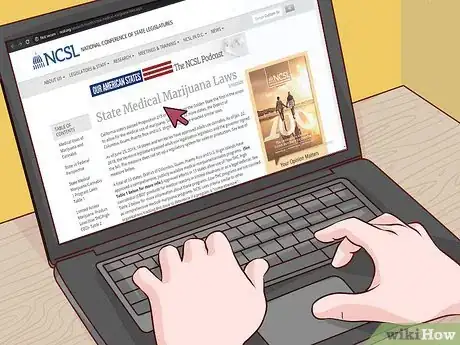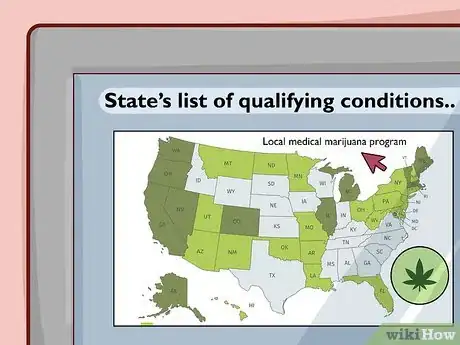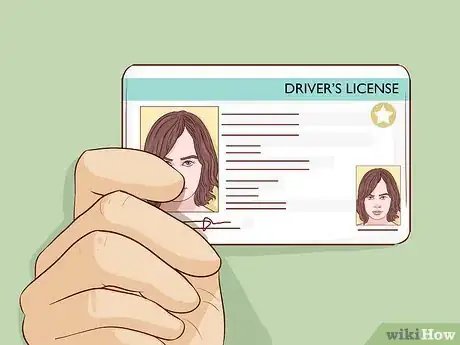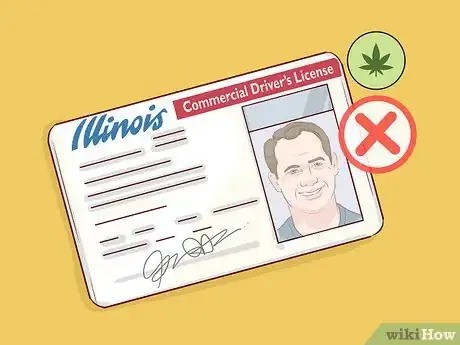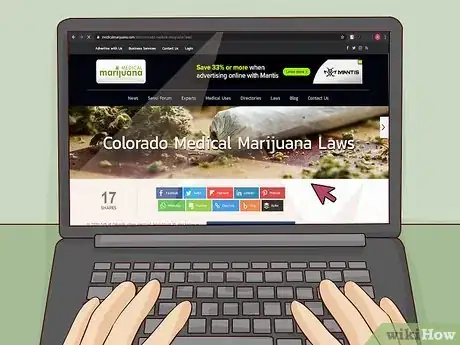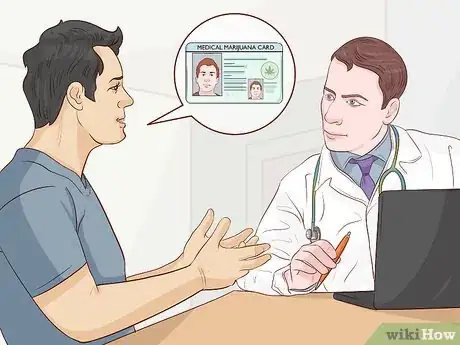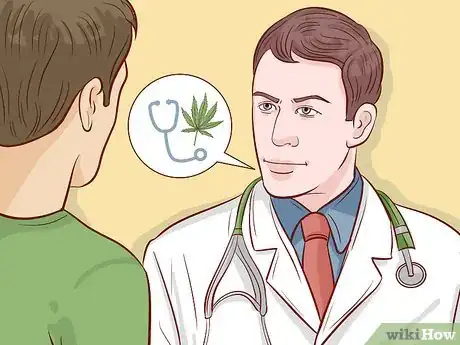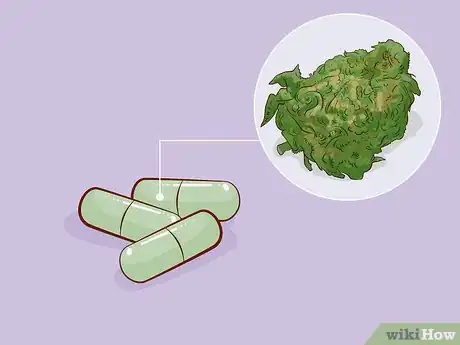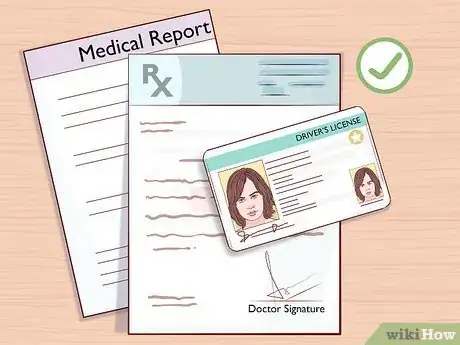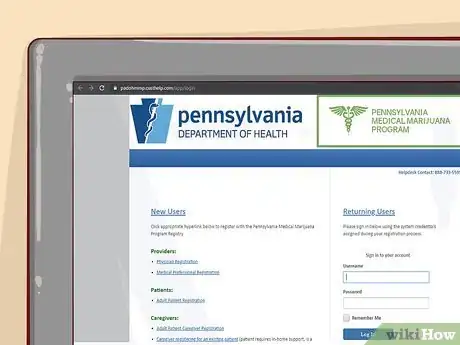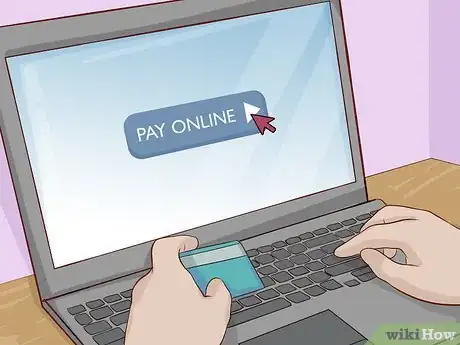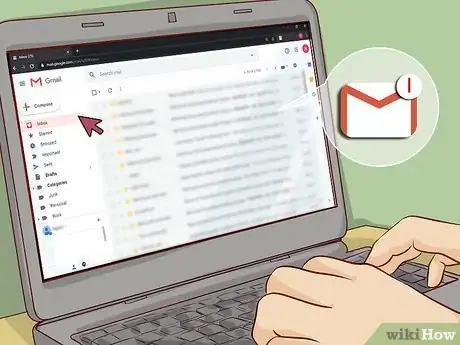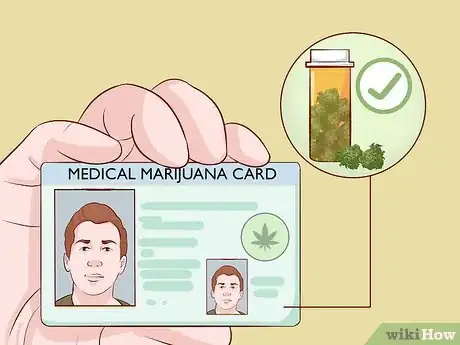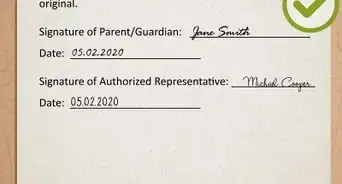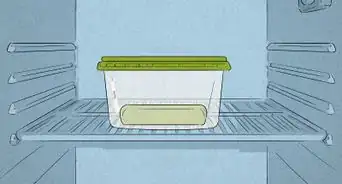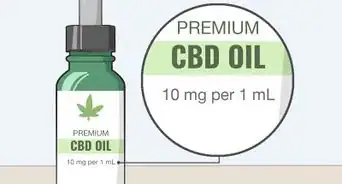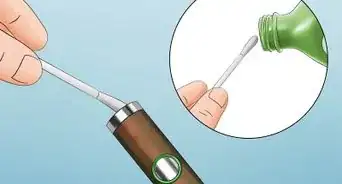This article was co-authored by Jamie Corroon, ND, MPH and by wikiHow staff writer, Megaera Lorenz, PhD. Dr. Jamie Corroon, ND, MPH is the founder and Medical Director of the Center for Medical Cannabis Education. Dr. Corroon is a licensed Naturopathic Doctor and clinical researcher. In addition to clinical practice, Dr. Corroon advises dietary supplement and cannabis companies regarding science, regulation, and product development. He is well published in the peer-review literature, with recent publications that investigate the clinical and public health implications of the broadening acceptance of cannabis in society. He earned a Masters in Public Health (MPH) in Epidemiology from San Diego State University. He also earned a Doctor of Naturopathic Medicine degree from Bastyr University, subsequently completed two years of residency at the Bastyr Center for Natural Health, and is a former adjunct professor at Bastyr University California.
There are 17 references cited in this article, which can be found at the bottom of the page.
wikiHow marks an article as reader-approved once it receives enough positive feedback. This article has 14 testimonials from our readers, earning it our reader-approved status.
This article has been viewed 1,075,542 times.
Getting access to medical marijuana in the U.S. is becoming easier all the time. As of 2020, medical marijuana programs are available in 33 states, the District of Columbia, Guam, Puerto Rico, and the Virgin Islands.[1] If you live in one of these areas and are interested in making marijuana part of your medical care, you’ll need to work with your doctor to apply for an ID card. Before you start the process, get familiar with your local laws and regulations so that you’ll know what to expect and how to proceed.
Steps
Researching Local Laws and Regulations
-
1Find out if your state or territory has a medical marijuana program. Most states and territories in the U.S. now have some type of medical marijuana program in place. To find out what kind of program is available in your area, visit the National Conference of State Legislatures page on State Medical Marijuana Laws: https://www.ncsl.org/research/health/state-medical-marijuana-laws.aspx.
- You can also find detailed, up-to-date information on medical programs in each state, territory, and the District of Columbia at the Americans for Safe Access website: https://www.safeaccessnow.org/becoming_a_state_authorized_patient.
- For more details, visit your state government’s website or do a web search using terms like “Medical marijuana program Pennsylvania.”
-
2Look at your state’s list of qualifying conditions to see if yours is listed. In most states, you must be diagnosed with one or more qualifying medical conditions in order to get a medical marijuana card. The list of approved condition varies from one place to another, so look closely at the list of conditions on your local medical marijuana program’s website.[2]
- You may also be able to request a list of qualifying conditions from your doctor or your local public health department.
- Common conditions that qualify for treatment with medical marijuana include cancer, seizure disorders, HIV/AIDS, glaucoma, and severe pain for which your doctor might otherwise prescribe an opioid.
- Some states allow the use of medical marijuana for almost any condition, while others are much more restrictive. A few states have “limited access” programs where qualifying patients can use low-THC, high-CBD cannabis products to treat a variety of conditions.[3]
Advertisement -
3Check whether you meet local residency requirements. Many states and territories have residency requirements for medical marijuana use.[4] This is partly because marijuana is still a controlled substance at the federal level. Check your local medical marijuana program’s website to find out what the requirements are and which documents you may need to prove your residency.
- For example, to qualify for Illinois’s medical marijuana program, you must be an Illinois resident at the time of your application and remain a resident as long as you participate in the program.[5]
- In Pennsylvania, you have to have a PA state ID or driver’s license in order to qualify for a medical marijuana card.[6]
Tip: Some states recognize medical marijuana ID cards from other states. If you are traveling within the U.S. and want to find out about your options for accessing medical marijuana outside your home state, check out the Americans for Safe Access travel guide: https://www.safeaccessnow.org/travel.
-
4Review any additional requirements or restrictions for your state’s program. Depending on the laws in your state or territory, you might also have to meet other requirements to qualify for a medical marijuana card. For example, you may need to be a certain age (typically 18 or older) or be restricted from working in particular jobs where the use of medical marijuana use could put you or others in danger.
- For instance, in Illinois, you can’t participate in the medical marijuana program if you hold a Commercial Driver’s License or school bus permit. Active duty police officers, firefighters, and correctional officers are also restricted from participating.[8]
- If you’re a minor, you may be able to use medical marijuana under the supervision of an approved parent or guardian.
Did you know? Patients who need assistance using medical marijuana can work with a licensed caregiver. In most states, a designated medical marijuana caregiver must be 21 or older and reside in the state where the patient lives.[7]
-
5Read about local laws governing how you can use medical marijuana. Medical marijuana programs protect participants from criminal prosecution related to the possession and use of marijuana.[9] However, you’ll still need to follow local laws in order to use your medication legally and safely. Review your program’s list of rules and regulations carefully before you register.
- For example, in Colorado, a medical marijuana patient can possess no more than 2 ounces (57 g) of marijuana and cultivate no more than 6 plants.[10] In other states, such as Illinois, patients are not allowed to grow their own marijuana.[11]
- There may also be restrictions on where and how you can use marijuana. For example, in Pennsylvania, a medical marijuana patient can’t smoke marijuana, use it in a public place, use or possess it on school grounds, or give it to anyone else.[12]
- It’s illegal to drive or operate heavy machinery while under the influence of marijuana, even in places where marijuana use is legal.
Working with Your Doctor
-
1Tell your doctor that you want to apply for an ID card. It can be hard to open up to your doctor about wanting to try medical marijuana, but it’s important to be forthright about your needs and expectations.[13] Explain to your doctor in an open and straightforward way that you are interested in trying medical marijuana and would like to apply for a medical marijuana ID.
- For example, you might say something like, “Over-the-counter medications aren’t doing much for my pain, and I don’t want to use opioids. Can we look into getting me approved for the medical marijuana program?”
-
2Ask your doctor to recommend a physician with medical marijuana experience. Some doctors are more open to prescribing medical marijuana than others. If you’re interested in incorporating marijuana into your treatment plan, talk to your primary care doctor. If they don’t feel comfortable prescribing it themselves, they may be able to recommend a doctor who can. They can also provide a referral and relevant medical records to any doctor you decide to see about using medical marijuana.[14]
- Ideally, you should work with a doctor who’s already familiar with your medical history.
- In some states, such as Pennsylvania, physicians who want to approve patients for medical marijuana use must register with the Department of Health.[15] Find out if your state maintains a list of approved physicians.
-
3Discuss how to use marijuana as part of your medical care. Before recommending you for a medical marijuana program, your doctor will want to discuss your treatment options with you. They can also give you important information about the risks and benefits of medical marijuana and counsel you on how to use it safely and effectively. To help your doctor make informed decisions about your care, be prepared to give them information such as:[16]
- How long you’ve had the medical condition(s) you’re hoping to treat
- What other treatment methods you’ve tried
- Any other medical conditions you have or medications you’re currently taking
-
4Get a signed certification form or statement from your doctor. Most states with medical marijuana programs require a signed statement from your physician that you are an appropriate candidate for medical marijuana use.[17] If your doctor agrees that medical marijuana is a good option for you, ask them to write a letter or fill out any required forms so you can submit them with your application.
- You can make the process easier by bringing in any required forms or paperwork for your doctor to sign. You can find medical marijuana recommendation documents by state on the Americans for Safe Access Website: https://www.safeaccessnow.org/state_by_state_recommending_cannabis.
Applying for Your Card
-
1Gather your proof of residency and any other required documents. Once you’re ready to apply for your ID card, get together all the paperwork you need. At minimum, this will probably include proof of identification and residency (such as some form of state ID that shows your current address), medical records proving that you’ve been diagnosed with a qualifying condition, and a signed recommendation from your doctor.[18]
- Visit your state’s medical marijuana program website and read their application instructions to determine what kind of documentation you need.
- In some states, such as Florida, your doctor must begin the application process for you by submitting their recommendation directly to the medical marijuana program registry. In these cases, you may only need to provide a copy of your ID or other accepted proof of residency.
- In some states, such as Maryland, you will also need to provide a photograph of yourself.[19]
-
2Visit your state’s online registration site and fill out an application. Most states with medical marijuana programs allow you to apply online. Go to your state or territory’s medical marijuana website and look for a link that says “Register,” “Apply for an ID Card,” or something similar. From there, you can create an account and begin the application process. Follow the prompts to complete your application and upload any requested documentation.
- For example, you can find links to apply for a medical marijuana card on the Pennsylvania Department of Health’s Medical Marijuana Program website: https://padohmmp.custhelp.com/app/login.
- If you live in a state where your doctor must begin the application process for you, such as Florida, you’ll get an email with a temporary user ID and password from the medical marijuana registry.[20]
- Depending on where you live, you may also be able to complete a paper application. Ask your doctor or local health department if this is an option.
-
3Pay any applicable fees. Most medical marijuana programs charge a fee for initial registration and renewal of your card (typically once a year). Application fees vary from one state to another, but they can cost anywhere from $25 to $250.[21] Follow the instructions for paying your fee when you complete the application.
- In some states, you may qualify for a reduced fee if you can demonstrate financial need (e.g., if you qualify for SNAP benefits).
-
4Wait to receive your permanent ID card in the mail. Most states with medical marijuana programs will provide approved patients with an ID card.[22] Once you’ve filled out your application, you should receive instructions on how to receive or pick up your card and an estimated timeline for when it will become available.
- In some cases, you may be able to print out a temporary ID card or use a copy of your approved application as your ID until your permanent card arrives.[23]
Tip: In most states, you’ll need to renew your medical marijuana ID card once every 1-2 years. Check your state’s medical marijuana program website for information on how and when to renew.
-
5Bring your ID card to a licensed dispensary or clinic to get marijuana. Once your ID card is available, you can use it to legally purchase medical marijuana. To ensure that you’re getting safe, legal, high-quality products, visit a licensed dispensary or clinic in your area.[24]
- Your doctor may be able to recommend a reputable dispensary, or your state’s medical marijuana program website may offer a list of licensed dispensaries in your area.
Expert Q&A
Did you know you can get expert answers for this article?
Unlock expert answers by supporting wikiHow
-
QuestionHow do you get a medical marijuana card?
 Jamie Corroon, ND, MPHDr. Jamie Corroon, ND, MPH is the founder and Medical Director of the Center for Medical Cannabis Education. Dr. Corroon is a licensed Naturopathic Doctor and clinical researcher. In addition to clinical practice, Dr. Corroon advises dietary supplement and cannabis companies regarding science, regulation, and product development. He is well published in the peer-review literature, with recent publications that investigate the clinical and public health implications of the broadening acceptance of cannabis in society. He earned a Masters in Public Health (MPH) in Epidemiology from San Diego State University. He also earned a Doctor of Naturopathic Medicine degree from Bastyr University, subsequently completed two years of residency at the Bastyr Center for Natural Health, and is a former adjunct professor at Bastyr University California.
Jamie Corroon, ND, MPHDr. Jamie Corroon, ND, MPH is the founder and Medical Director of the Center for Medical Cannabis Education. Dr. Corroon is a licensed Naturopathic Doctor and clinical researcher. In addition to clinical practice, Dr. Corroon advises dietary supplement and cannabis companies regarding science, regulation, and product development. He is well published in the peer-review literature, with recent publications that investigate the clinical and public health implications of the broadening acceptance of cannabis in society. He earned a Masters in Public Health (MPH) in Epidemiology from San Diego State University. He also earned a Doctor of Naturopathic Medicine degree from Bastyr University, subsequently completed two years of residency at the Bastyr Center for Natural Health, and is a former adjunct professor at Bastyr University California.
Medical Director of the Center for Medical Cannabis Education f medical marijuana is legal in your state, you must visit a qualified healthcare professional, who will then evaluate your past medical history and any current complaints. If you meet the criteria for your state's medical marijuana program, you will receive a medical marijuana authorization, which may also be called a medical marijuana ID card.
f medical marijuana is legal in your state, you must visit a qualified healthcare professional, who will then evaluate your past medical history and any current complaints. If you meet the criteria for your state's medical marijuana program, you will receive a medical marijuana authorization, which may also be called a medical marijuana ID card.
References
- ↑ https://www.ncsl.org/research/health/state-medical-marijuana-laws.aspx
- ↑ https://www.safeaccessnow.org/condition
- ↑ https://www.ncsl.org/research/health/state-medical-marijuana-laws.aspx
- ↑ https://reason.org/wp-content/uploads/residency-requirements-marijuana-licensure.pdf
- ↑ http://www.dph.illinois.gov/topics-services/prevention-wellness/medical-cannabis/medical-cannabis-registry-application
- ↑ https://www.pa.gov/guides/pennsylvania-medical-marijuana-program/
- ↑ http://pdaps.org/datasets/rules-of-caregivers-medical-marijuana-1501610940
- ↑ http://www.dph.illinois.gov/topics-services/prevention-wellness/medical-cannabis/medical-cannabis-registry-application
- ↑ https://www.mpp.org/issues/medical-marijuana/summary-of-state-medical-marijuana-laws/
- ↑ https://www.safeaccessnow.org/becoming_a_patient_in_colorado
- ↑ https://www.safeaccessnow.org/becoming_a_patient_in_illinois
- ↑ https://www.safeaccessnow.org/becoming_a_patient_in_pennsylvania
- ↑ https://www.health.harvard.edu/blog/medical-marijuana-2018011513085
- ↑ https://www.safeaccessnow.org/talking_to_your_doctor_about_medical_marijuana
- ↑ https://www.pa.gov/guides/pennsylvania-medical-marijuana-program/
- ↑ https://www.safeaccessnow.org/talking_to_your_doctor_about_medical_marijuana
- ↑ https://www.mpp.org/issues/medical-marijuana/summary-of-state-medical-marijuana-laws/
- ↑ https://www.thestreet.com/how-to/how-to-get-medical-marijuana-card-14643518
- ↑ https://mmcc.maryland.gov/Pages/patients_regisadult.aspx
- ↑ https://s27415.pcdn.co/wp-content/uploads/_documents/Instructional_Guides/PT/Login-Instructions-Initial_v3.pdf
- ↑ https://www.marijuanabreak.com/how-to-get-your-medical-marijuana-card-by-state
- ↑ https://www.ncsl.org/research/health/state-medical-marijuana-laws.aspx
- ↑ http://www.dph.illinois.gov/topics-services/prevention-wellness/medical-cannabis/medical-cannabis-registry-application
- ↑ https://www.nextavenue.org/medical-marijuana-dispensary/
About This Article
The quickest way to get a medical marijuana card is to make an appointment in person or online with a doctor who is licensed to prescribe medical marijuana. Depending on your state, you may need to fill out an application online and/or submit it to the State Health Department. Include documents, such as a copy of your driver’s license and a utility bill, that prove your identity and residence. Then, pay any required fees for getting your ID card. To learn more about how to get your medical marijuana once you have an ID card, read on!
